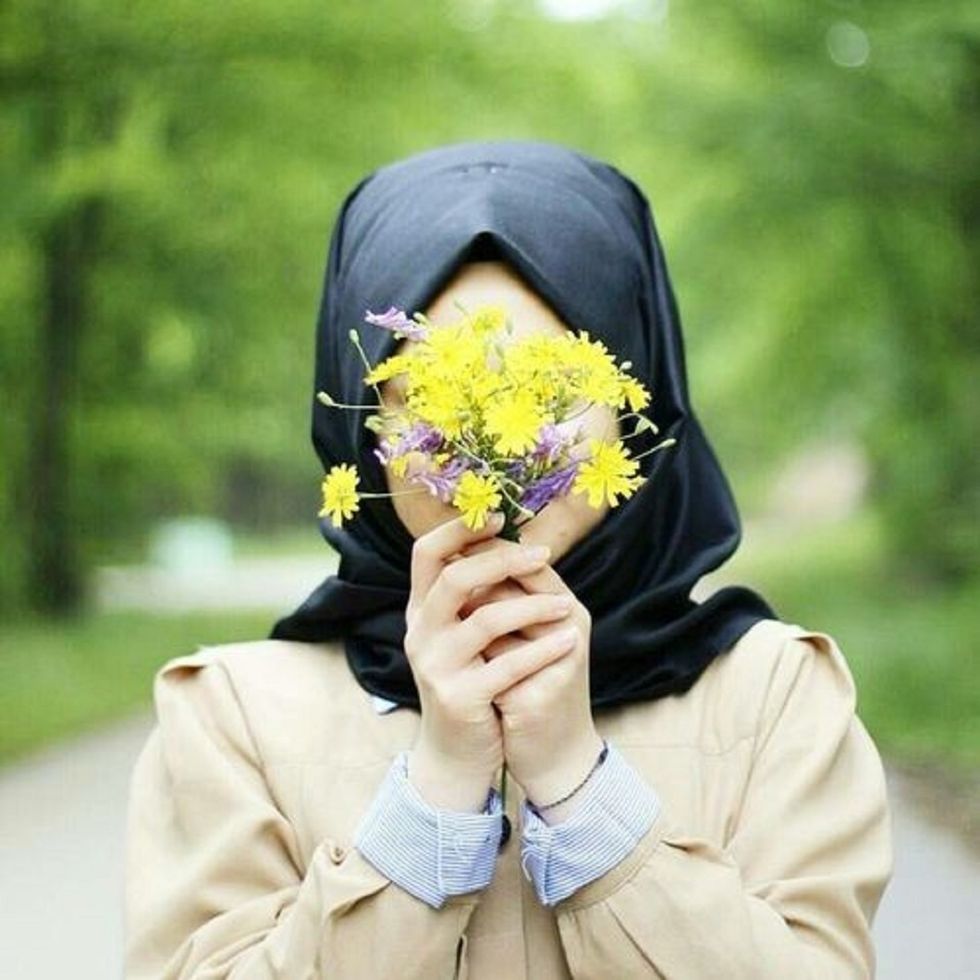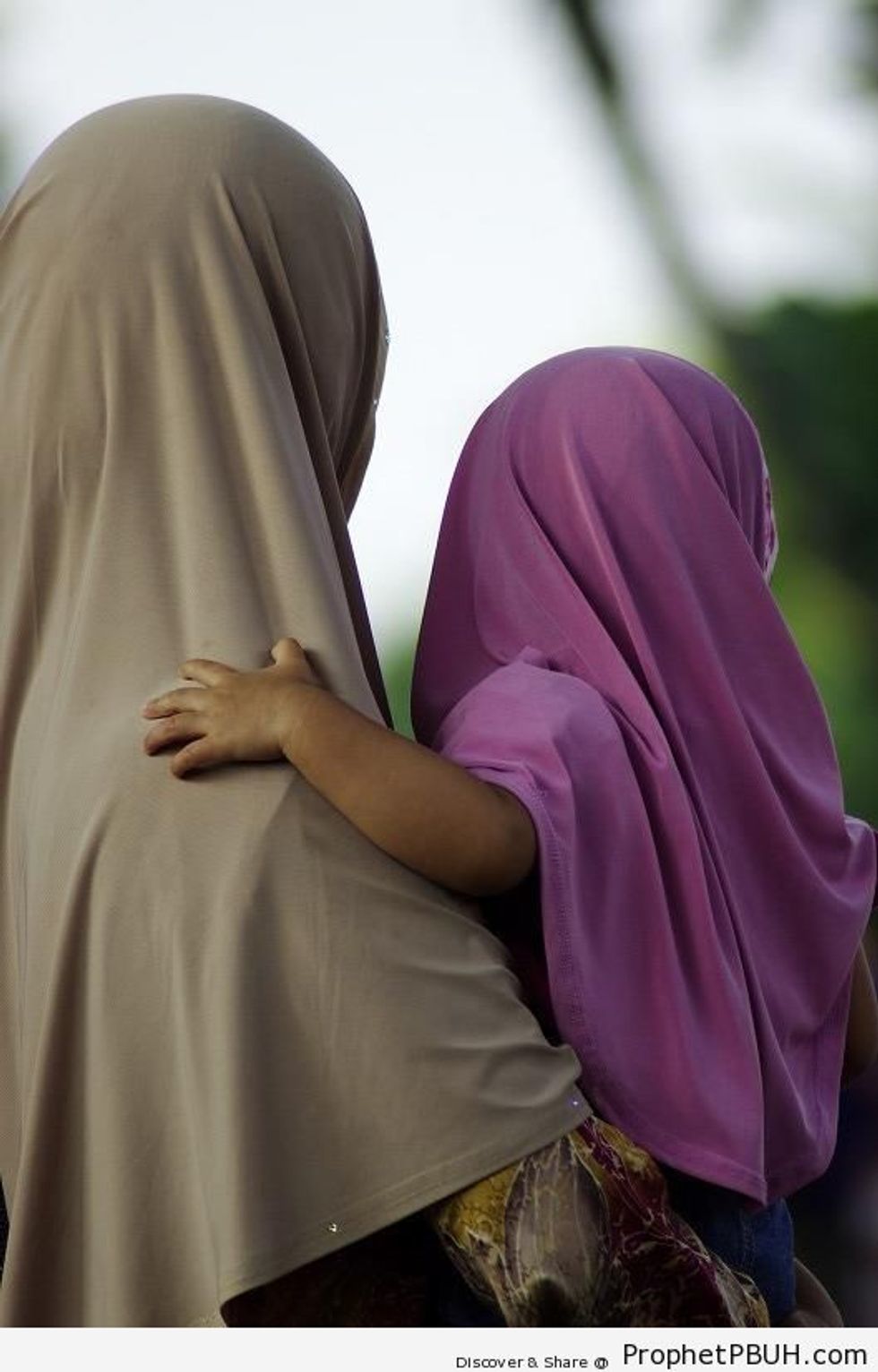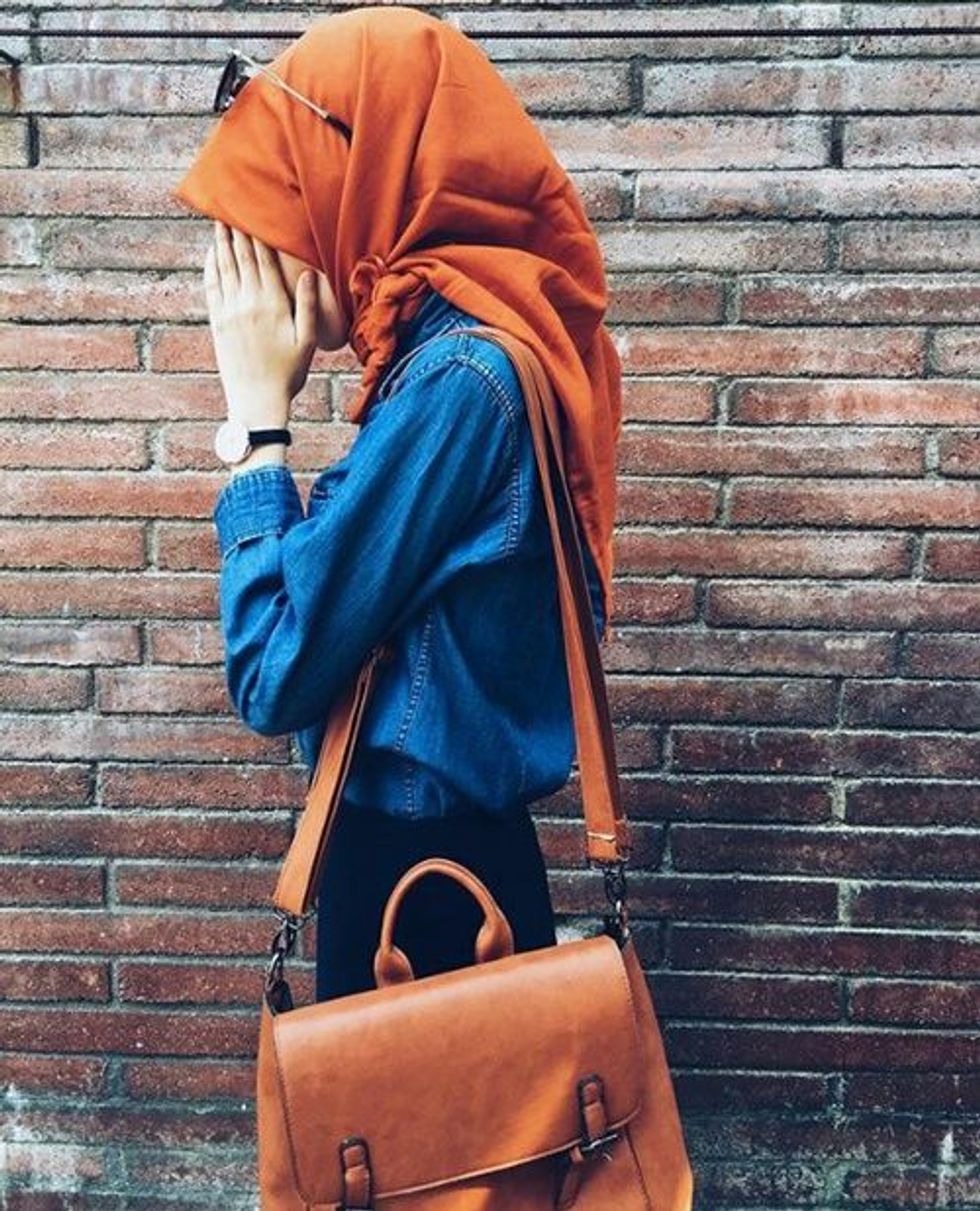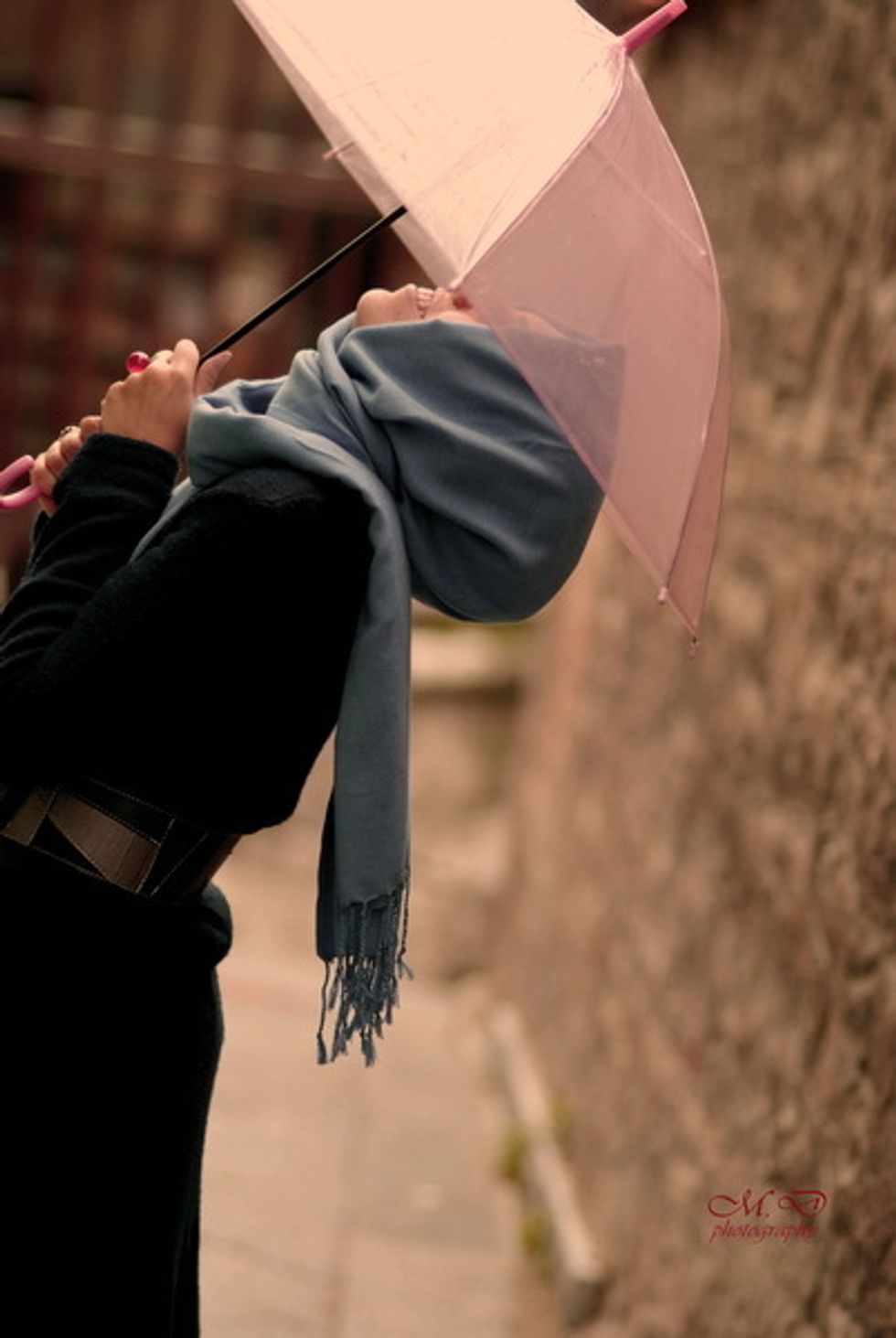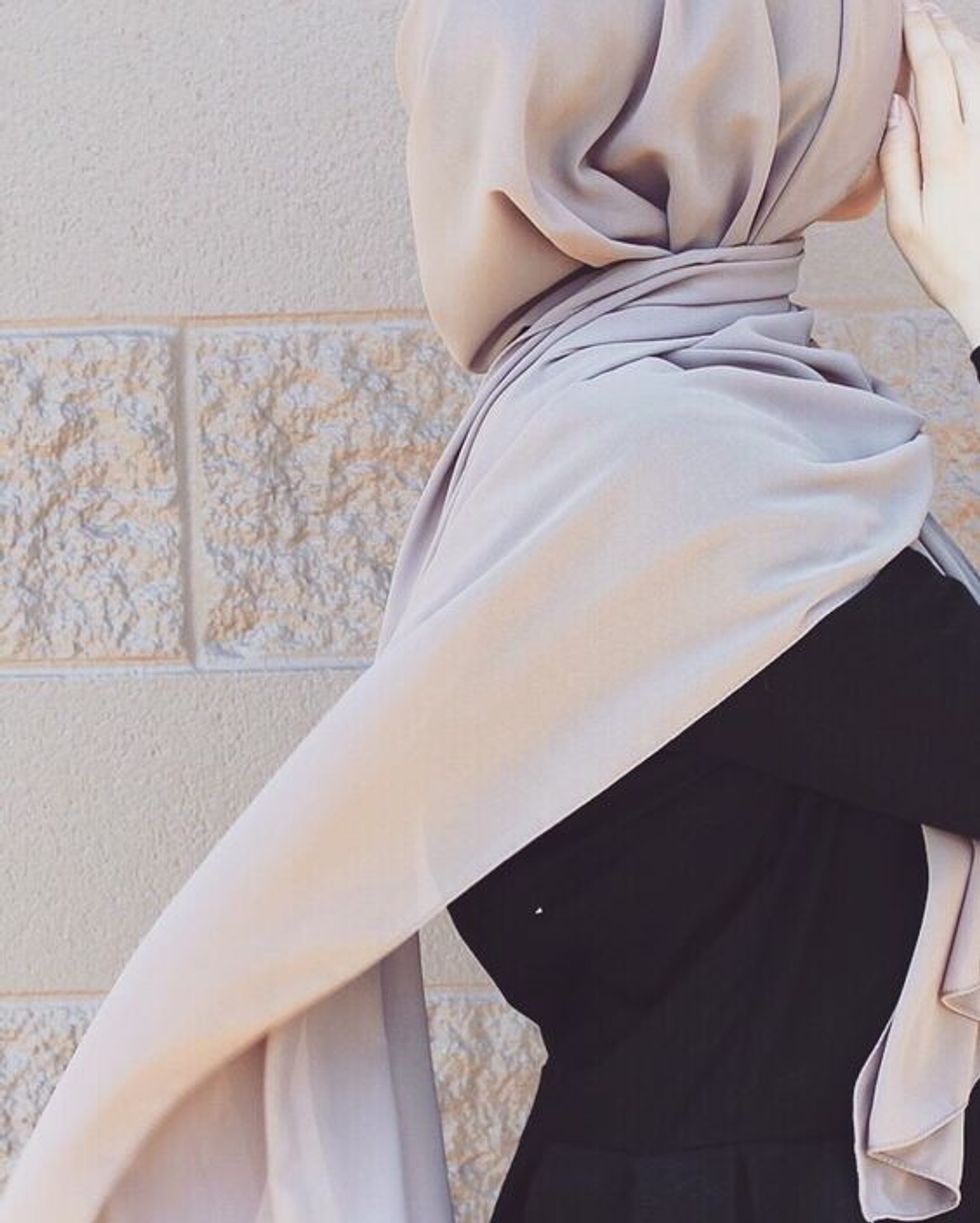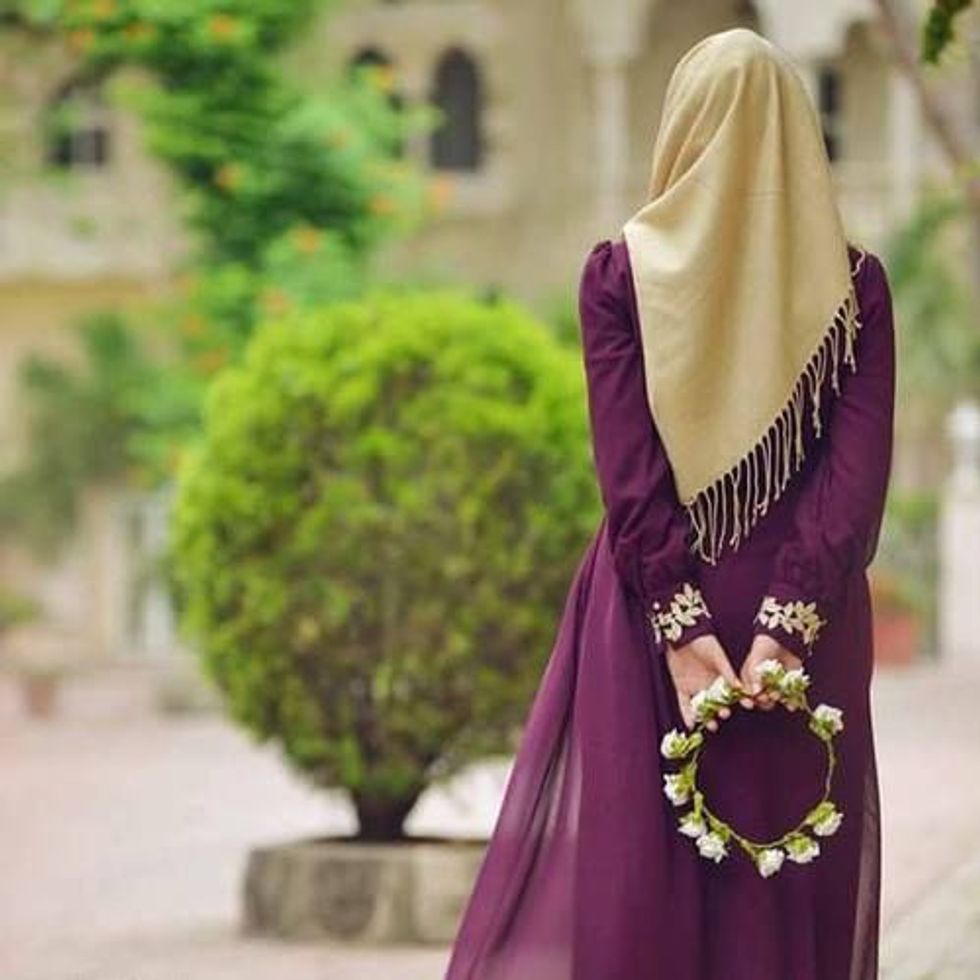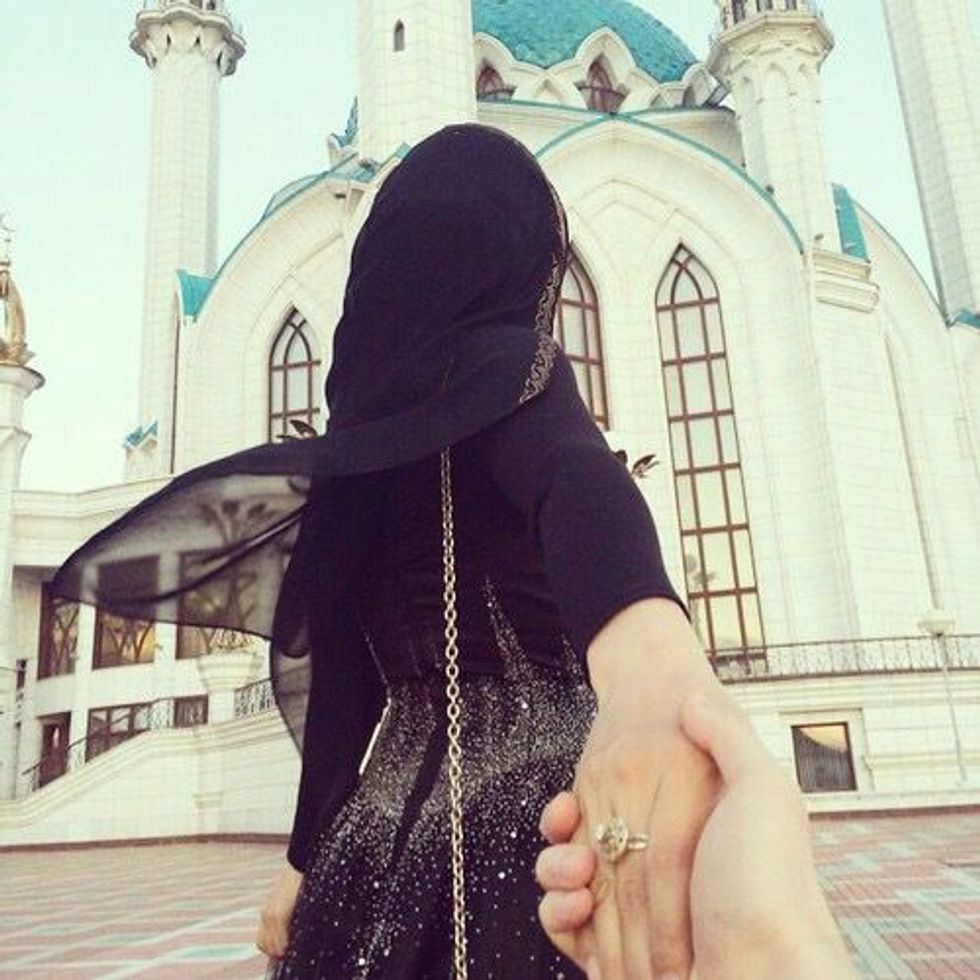As a practicing Muslim woman, I'm often asked about my clothes — namely, why there's a scarf on my head, a loose dress round my body and a veil across my face. And although the odd stares are still a common occurrence nearly wherever I go, they've simply become part of my everyday scenery. So, at times, it still catches me off guard when people are curious about my faith, but I'm always more than happy to share my answers!
Here are some questions my Alpha teammate suggested:
1. Have you ever not wanted to wear your headscarf (aka hijab) when you were younger?
I'd say only at the very beginning, during the first week, but not once after that. I think the two main things that solidified my dedication to the hijab were that firstly, it was primarily my choice and second, it was a choice made with finality.
I made this choice in sixth grade, so I was quite dependent on my family's support —especially on the first day of middle school when I hesitated in the carpool line, anxious about the stares I'd get. However, even before the choice was made, I had learned and accepted the fact that hijab is mandatory in Islam.
Hijab is not "I feel like wearing a headscarf today," and then taking it off the next. Hijab is not about fashion or trying to appease someone or something. Hijab is the next step in practicing your faith, so while the choice may be made at everyone's own time due to their circumstances, it is a choice that cannot be easily revoked as if all it is simply a cloth covering your hair.
Hijab is so much more than that.
Because I understood that at 11 years old, my choice to wear the hijab wasn't hindered by my feelings or others' reception of it. I knew that whatever difficulties I would face would not be instigated by the hijab, but rather because of how people are and how the world is. Everything, including all hardships and goodness, come from Allah (SWT), so knowing that I was wearing the hijab solely for Allah (SWT) became and still is the core reason why I have never felt like taking off my scarf and why I will never stop wearing it.
2. Was it awkward wearing the headscarf (hijab) at that point of your life?
The only awkward phase I had wearing hijab was trying to find appropriate clothing to pair with the headscarf. Shopping, especially in middle school where being fashion forward meant tight shirts and skinny jeans, was a bit of a nightmare. It was actually a relief to wear abaya after that because I had a hard time finding loose, appropriate clothes to mix and match with my hijabs, but that's just me. There are other hijabis who are obviously much more talented in that field than I was, so props to them!
Overall, it wasn't the headscarf that was awkward, rather most of the time, it was other people.In a way, the headscarf is a wonderful way to skip the pretense, for it helps you instantly see people for who they are at their core.
Anyone who feels uncomfortable with practicing Muslims will seldom hide their distaste and don't mind picking on little girls wearing hijabs — which goes to show you what kind of people they must be. Others who barely bat an eye and easily strike up a conversation are either familiar with the practice or just really good at going with the flow. And then there are some who are just the good ol' awkward. They stare, then quickly lower their eyes, then peek another look when they think you can't see them. They don't even know where to start or how they feel, and it looks like it'll take them a good hour or two or process the sight of you alone. They'll speak quickly, properly and politely while scanning your items at the register or answering your questions in class, but they rarely veer off subject, because they have an unspoken fear they might say the wrong thing. All they know is what they get from the news and online sources, most which they don't trust because how can they verify what is true and what isn't?
That's where I step in, using a light, jovial tone to ask about their day and exchange pleasantries about the weather. Ten minutes into a good conversation and most people will forget why they were so nervous to begin with.
3. Does it get really hot during the summer or does the headscarf (hijab) somehow provide shade?
This is a bit tricky to answer because it depends on how the person is wearing her hijab.
Typically, the hijab is worn with a hijab cap, which covers the hair, lifting it off the neck and making it easy to pin the scarf on. If the hijab cloth is a breathable, light fabric, such as silk, rayon or crepe (to name a few), then nine times out of 10 for me, I won't get overheated during the summer when out and about in the sun. And yes, the hijab will act as almost like a shade from the sun, protecting my neck and head from sunburns while also giving them room to breathe under the scarf instead of perspiring against my hair.
Now, some hijabis may opt to go without the hijab cap or wear a heavier cloth as a headscarf, and this can be a no-no for summer weather — especially if the cloth is such that it's meant to keep you warm, thus by encasing the heat in and prickling your skin. So for this one, I'd say just experiment with which scarves and styles work best for you during the summer, and you'll be good to go.
We've all been or seen that one hijabi who still wears a gorgeous solid jersey cotton hijab during summer just 'cause it's "pretty," only to be drenched in sweat by the end of the day.
So don't worry sweaty hijabis — been there, done that. I feel you.
4. Have you ever forgotten to wear your headscarf (hijab)?
On one weird occasion in 6th grade when I was readjusting my pull-on headscarf in the girls' bathroom, slipped on the hijab cap but somehow forgot to put the rest on and walked out. I left the hijab hanging over my shoulder, strolling along the hall and suddenly wondering why a boy in the hallway was staring at me even longer than usual only to realize mid-step that I only had my hijab cap on. Needless to say, I ran back and pulled myself back together before re-exiting the bathroom.
Thankfully I've almost never had to hightail incident again after I started opting for pin-on hijabs instead of the pull-ons.
5. Has anyone ever asked you to take off your hijab?
The headscarf? Only on the rare occasion, like by teachers who would pull me aside and say, "I'm just looking out for you. Don't worry, I won't tell your mom if you take it off," to airport security (who most of the time don't even need you to, but some just like to test their limits which can easily be reinforced by simply asking, "Why?") to some of my own relatives who simply assumed I did not have a choice.
But in total, I'd say I've only had a total of five or six cases in which people have asked me to remove my scarf. Rather, I'm more likely to be asked to remove my niqab (face veil).
In the case of security situation, such as at the DMV or airport screening room or even at the recent special district election in Georgia, I cooperate by unveiling my face for identification purposes, but there has never been a need nor do I suspect there ever will be (or should there be, really) for me to take off my headscarf.
So yes, people have asked, even my friends who just wanted to see how I put it back on, but if there is no pressing reason to remove it, I don't.
6. What's it like wearing it in general?
Honestly, it makes me feel beautiful, cozy and proactive.
I feel that I own myself — my hair, my body, my face all belongs to me, and I choose who gets to see it, when and how. I am responsible for my body. These physical attributes are mine, but they do not define me, and they do not restrict me in the way I see others being boxed in simply because of how they look — whether this is due to the pressures of society or the individual's self. Instead, I am able to appreciate myself and accept my physical shortcomings without falling prey to the judgment of others which would undoubtedly affect my mindset about my own body as well.
I feel safe and cozy because it quite literally warms you up a bit and is an armor from the judgement and preoccupation there is in the world. Everyone is so busy trying to live and following society's directions on how to be successful, that they forget why. Practicing my faith through the hijab makes me feel I am doing the right thing, that I am making the right choice and that I am doing this for a higher purpose. Having a clear intention and goal in mind solidifies my faith and helps me to take steps to further succeed with it.
This leads me to the final part: being proactive. As I've progressed from the headscarf to the face veil (niqab), I've had to develop my character along the way — from first learning how to break out my shy shell and speak up from when I started wearing the hijab, to treating bodies with respect when I donned the abaya and to understanding how to use my voice effectively once I took on the veil.
I went from the insecure, withdrawn kid to a confident young woman with a strengthened faith and adaptable qualities. And it all began the first day of middle school when I decided to take that first step to practice my faith by wearing the hijab. It is my proudest memory, and I've never regretted it since.

